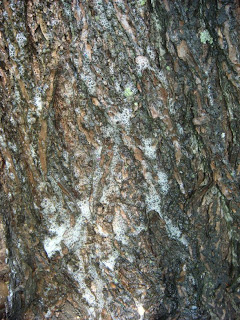Invasive Plants on the Land – A Vermont Challenge
By Colleen Balch
Vermonters’ lives are connected to the land of our small state. We hike and farm. We fish and sugar. We walk and ride and hunt. We care for our yards and gardens. We value our wildlife and lovely green vistas. We spend time outdoors. And, while we might not always recognize it, we are witnessing a change that could impact many of the things we value about our small, green, mountainous state. The quiet spread of invasive plants across our landscape presents a call to action.
Vermonters’ lives are connected to the land of our small state. We hike and farm. We fish and sugar. We walk and ride and hunt. We care for our yards and gardens. We value our wildlife and lovely green vistas. We spend time outdoors. And, while we might not always recognize it, we are witnessing a change that could impact many of the things we value about our small, green, mountainous state. The quiet spread of invasive plants across our landscape presents a call to action.
An invasive
plant isn’t simply a problem because it’s from somewhere else. A
plant from somewhere else that stays put is just a polite and welcome visitor
wherever it takes root. It can add color
to our yards like our favorite daffodils, tea roses, and hydrangeas. It can give us the great taste of a
summertime garden with that first warm, ripe tomato fresh from the garden. Or, it can stock our root cellars with home
grown potatoes and cabbages. It doesn’t
pose a threat.
 |
A family putting the skills they've learned to good use in an Invasive Plant
Habitat Restoration program at Emerald Lake State Park |
Vermont Traditions and Economy
Replace a score
of native plants that normally grow together here on the forest floor with one
invasive honeysuckle, and an impenetrable thicket results. For folks who manage a sugarbush, sap lines
are hard to run. For hunters, sightlines
disappear and browse for deer populations drops. Seedlings that naturally
sprout to renew economically valuable trees within the forest, never reach
maturity.
Tick Presence
Invasive
plants, particularly Barberries, create conditions that promote larger
populations of Deer Ticks, the small pest that spreads Lyme Disease. Barberries are thorny and create protected
havens for mice which Deer Ticks need during their life-cycle. More and larger mice populations equal more
and larger tick populations. Larger tick
populations have greater impacts on human health. And, the Barberries also create areas of
higher moisture that help out ticks too.
Wildlife and Fish Habitat
Lose a number
of plants that normally live on the forest floor to a pure carpet of invasive
Garlic Mustard, and that loss impacts the animals that feed on, nest in, hide
in, and use the native plants in any way.
Replace shrubs with strong and durable roots that have lined our
mountain streams for millennia with Japanese Knotweed, which dies back below
ground each fall, and the streambank soil becomes stripped and vulnerable to springtime
floods. As the powerful floodwaters
scrub the streambanks, soil erodes and is carried along. Much of that soil ends up filling the tiny
spaces between the rocks in gravel beds that trout use to spawn. With the spaces filled in, the fish eggs and
their teeny hatchlings lose protection from the force of rushing waters and
predators. Fish populations struggle.
Colleen Balch works with the Invasive Plant Habitat Restoration Program of the Vermont Department of Forests Parks and Recreation, teaches field and conservation sciences in the Rutland area, and lives in the Taconic Mountains in southwestern Vermont.

.jpg)
.jpg)
Comments
Post a Comment
Feel free to let us know what you think.